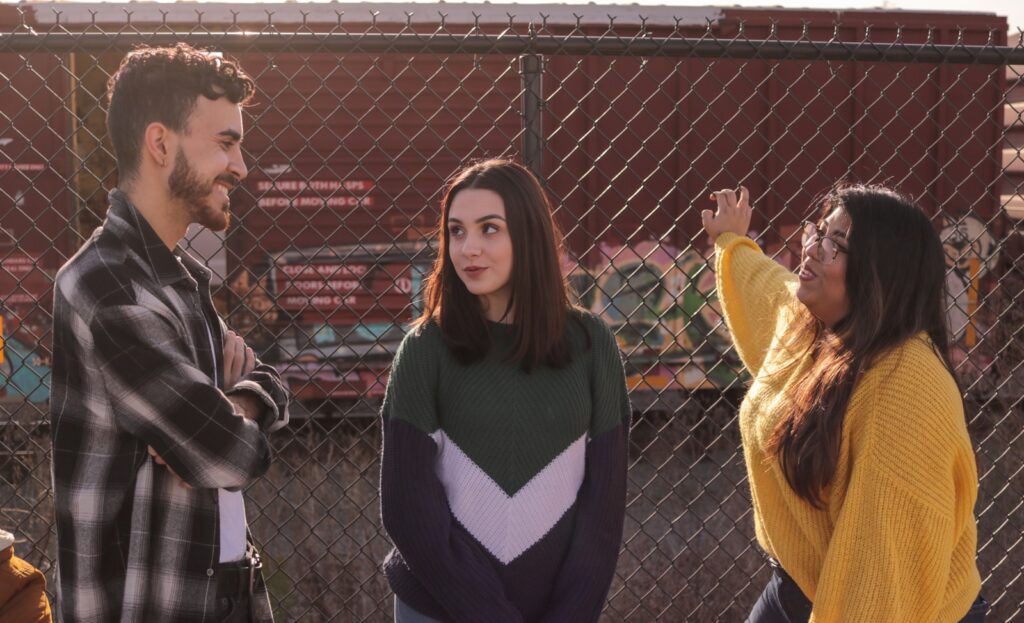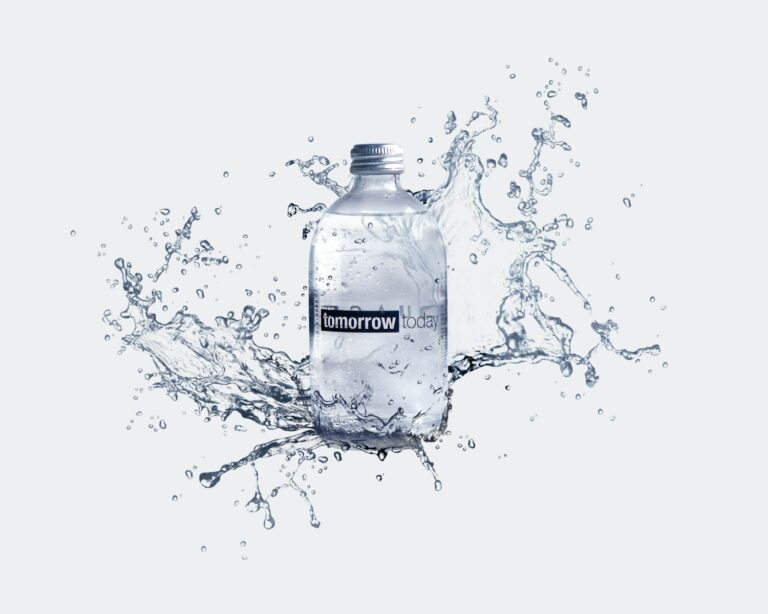How to Say “That Looks Good” in Spanish: An In-Depth Guide
Imagine you’re strolling through a vibrant Mexican market, the air filled with the scent of fresh tortillas and sizzling street food. You spot a beautiful handcrafted vase that catches your eye. You want to tell the vendor it looks amazing, but your Spanish is a bit rusty. You fumble and wish you knew the right words. Wouldn’t it be great to confidently say, “¡Eso se ve bien!”?
Learning how to compliment something in Spanish not only makes your travels smoother but also helps you connect with people on a deeper level. Whether you’re admiring a friend’s new outfit or praising a delicious dish, knowing phrases like “¡Eso se ve genial!” can make all the difference. Stick around, and we’ll jump into the nuances of these expressions, so you can impress and engage effortlessly.
Basic Spanish Phrase for “That Looks Good”
Wanna compliment something in Spanish and leave a lasting impression? It’s simple! Use the phrase “Eso se ve bien”. This neat and versatile expression can brighten someone’s day, whether you’re traveling, making new friends, or just showing appreciation.
Main Translation: “Eso se ve bien”
When you’re thinking, “How do I say ‘That looks good’ in Spanish?”, the phrase “Eso se ve bien” is your go-to. It captures the essence of admiration perfectly.
Word-by-word Breakdown
Translating “That looks good” into Spanish means breaking it down:
“Eso” (That)
The word “Eso”, pronounced “EH-soh”, translates to “That”. It points to something specific, like an outfit, a project, or a dish.
“Se ve” (Looks)
The phrase “Se ve”, spoken as “SAY VEH”, means “Looks”. It signifies how something appears to the eye.
“Bien” (Good)
Finally, “Bien”, pronounced “BEE-en”, stands for “Good”. It’s an all-encompassing word of approval.
Pronunciation Guide
Nailing the pronunciation makes a world of difference. Here’s how you can say “Eso se ve bien” perfectly:
Spanish Word/Phrase | Pronunciation |
|---|---|
Eso | “EH-soh” |
Se ve | “SAY VEH” |
Bien | “BEE-en” |
Putting it all together, “Eso se ve bien” is pronounced “EH-soh SAY VEH BEE-en”. Easy, right?
Alternative Ways to Express “That Looks Good” in Spanish

Understanding how to compliment someone or something in Spanish can make your interactions more meaningful and enjoyable. Let’s explore various ways to express “That looks good” in Spanish, whether you’re looking to sound formal or informal, or understand regional nuances.
Formal Variations
Using formal phrases can show respect and politeness. These phrases are great for formal settings or with people you’re not close to.
“Eso luce bien”
“Eso luce bien” translates to “That looks good.” It’s a polished way to express approval or satisfaction with something. Maybe you’re at a restaurant and the presentation of your dish impresses you. You could say, “Eso luce bien”, and it’s likely to earn a smile from your server.
“Eso está bueno”
Another formal option is “Eso está bueno”, meaning “That is good.” Use this when discussing the quality of something. For example, if you sampled a wine and it’s up to your standards, “Eso está bueno” communicates your satisfaction effectively.
Informal Expressions
When you’re with friends or in a casual setting, you might opt for more lively, relaxed phrases. They convey enthusiasm and friendliness.
“¡Qué bueno se ve!”
“¡Qué bueno se ve!” translates to “That looks great!” It’s an enthusiastic way to admire something you’re excited about. Think about seeing a friend’s new outfit or new gadget. Saying “¡Qué bueno se ve!” shows your genuine admiration in a fun way.
“¡Se ve genial!”
Similar in tone is “¡Se ve genial!”, which means “That looks awesome!” It’s perfect for expressing strong approval or excitement. Imagine unwrapping a beautifully wrapped gift. Your spontaneous “¡Se ve genial!” can make the giver feel appreciated.
Regional Differences in Spanish-Speaking Countries
Spanish-speaking countries often have their own unique expressions, adding a regional flavor to your compliments.
Mexico
In Mexico, a common informal expression is “¡Se ve bien chido!” which means “That looks really cool!” It’s perfect for casual compliments among friends or family.
Spain
In Spain, you’ll hear “¡Esto es genial!” quite often. This phrase means “This is awesome!” Use it to express high enthusiasm. For example, seeing an impressive street performance in Madrid can be a moment to say “¡Esto es genial!”.
Argentina
And in Argentina, people often use “¡Eso es re bueno!” meaning “That’s really good!” This expression is great for everyday conversations to show solidarity and approval.
Spanish Phrase | Translation | Context |
|---|---|---|
Eso luce bien | That looks good | Formal, respectful approval |
Eso está bueno | That is good | Formal, quality assessment |
¡Qué bueno se ve! | That looks great! | Informal, enthusiastic admiration |
¡Se ve genial! | That looks awesome! | Informal, strong approval |
¡Se ve bien chido! | That looks really cool! | Informal, Mexico-specific expression |
¡Esto es genial! | This is awesome! | Informal, Spain-specific enthusiasm |
¡Eso es re bueno! | That’s really good! | Informal, Argentina-specific approval |
Feel free to use these expressions to connect better with Spanish speakers, whether formally, informally, or according to regional preferences. It’s all about adding that extra touch of authenticity to your compliments.
Using “That Looks Good” in Different Contexts
Ever found yourself loving something but not knowing how to express it in Spanish? Compliments can go a long way in building connections. Here’s how you can say “That looks good” in various scenarios, and why it’s worth making the effort.
Complimenting Food
When it comes to food, expressing admiration can turn a good meal into a memorable experience.
“¡Qué rico se ve!” (That looks delicious!)
Imagine you’re at a friend’s dinner party, and they present a beautifully cooked meal. Saying “¡Qué rico se ve!” not only shows your appreciation but could also make them beam with pride. It’s a simple yet effective way to compliment culinary skills.
“¡Tiene buena pinta!” (It looks appetizing!)
Ever walked past a bakery with a display that made your mouth water? Use “¡Tiene buena pinta!” to let your friend or the baker know that their creation caught your eye. It’s a great way to strike up a conversation and share your love for good food.
Praising Appearance or Fashion
Compliments on appearance or fashion can boost someone’s confidence and brighten their day.
“¡Te queda muy bien!” (It suits you very well!)
When your friend’s new outfit looks fantastic, saying “¡Te queda muy bien!” lets them know they made a great choice. Why keep admiration to yourself? Sharing it can strengthen your bond and make them feel fabulous.
“¡Estás guapísimo/a!” (You look great!)
Planning to compliment someone on their overall look? Use “¡Estás guapísimo/a!” to tell them they’re looking exceptional. Whether it’s for a special occasion or just because, this phrase can make their day a little brighter.
Approving Objects or Situations
Sometimes, you need to express approval of objects or situations. Here’s how to make sure your admiration is understood.
“¡Qué bien se ve todo!” (Everything looks great!)
Just entered a well-decorated room or spotted a neat workspace? Saying “¡Qué bien se ve todo!” shows you notice and appreciate the effort put into aesthetics. It’s great for acknowledging someone’s tidiness and creativity.
“¡Parece perfecto!” (It looks perfect!)
Encountering a well-executed project or a beautifully arranged setting? Use “¡Parece perfecto!” to convey your admiration. Whether it’s a business presentation or a perfectly organized event, this phrase acknowledges the precision and hard work behind it.
Context | Spanish Phrase | English Translation |
|---|---|---|
Complimenting Food | ¡Qué rico se ve! | That looks delicious! |
¡Tiene buena pinta! | It looks appetizing! | |
Praising Appearance | ¡Te queda muy bien! | It suits you very well! |
¡Estás guapísimo/a! | You look great! | |
Approving Objects | ¡Qué bien se ve todo! | Everything looks great! |
¡Parece perfecto! | It looks perfect! |
Let these phrases enhance your interactions and add a touch of charm to your compliments. Use them generously, and watch how people respond positively to your admiration.
Grammar Tips for “That Looks Good” in Spanish
When learning how to say “That looks good” in Spanish, understanding the grammatical nuances can be quite beneficial. Let’s jump into some essential grammar tips to help you sound more natural and confident.
Understanding Reflexive Verbs Like “Verse” (to Look)
In Spanish, reflexive verbs can change the way you express yourself. Using verse (to look) is a key part of saying “That looks good.” For example, you might say “Eso se ve bien” (That looks good). The reflexive component se ve implies that something appears or looks a certain way to you.
Take a look at these examples:
By mastering reflexive verbs, you’re adding a layer of authenticity to your Spanish compliments. Isn’t that a great tool for your language arsenal?
Adjective Agreement with “Bien” and Alternatives
Adjectives in Spanish need to agree with the nouns they modify. When saying “good,” you use bien. But, you can spice up your compliments with alternatives like bonito (pretty), hermoso (beautiful), or excelente (excellent).
Consider these examples:
Seeing these in action helps you remember adjectives must match the gender and number of the nouns they describe. Why not try mixing it up next time you give a compliment in Spanish?
Using Demonstrative Pronouns (Eso, Esto, Aquello)
Demonstrative pronouns help specify which object you’re talking about. In Spanish, eso, esto, and aquello stand for “that,” “this,” and “that over there,” respectively.
Here’s how you use them:
These words ensure clarity in your compliments, pinpointing exactly what you’re admiring. They make it easier for others to understand your praise. Using the right pronoun can transform a basic compliment into a more nuanced statement.
Summarizing:
Spanish Phrase | English Translation |
|---|---|
Eso se ve bien | That looks good |
Esto se ve bien | This looks good |
Aquello se ve bien | That over there looks good |
Eso es bonito | That is pretty |
Esto es hermoso | This is beautiful |
Aquello es excelente | That over there is excellent |
Eso parece bien | That seems good |
Esto parece bien | This seems good |
Aquello parece bien | That over there seems good |
Cultural Considerations When Complimenting in Spanish

Understanding how to compliment effectively in Spanish involves more than just knowing the right phrases. It’s also about timing, cultural sensitivity, and body language. Let’s explore these layers:
Appropriate Situations for Using Compliments
Using compliments can be an excellent way to build rapport. In many Latin American countries, giving compliments is common and can strengthen relationships.
For example:
But, in Spain, compliments might be more reserved. Overdoing it could come off as insincere. So, consider the social context before showering someone with praise. If you’re unsure, observe others’ interactions.
Potential Differences in Compliment Reception Across Cultures
Not all Hispanic cultures receive compliments the same way. A compliment in one country might be seen differently in another.
Country | Common Practice | Sensitivity Level |
|---|---|---|
Mexico | Frequent “¡Me gusta!” for food/clothing | High |
Spain | Reserved “Está bien” for achievements | Moderate |
Argentina | Open “¡Qué hermoso!” for appearances | Low |
In Mexico, people often openly praise food or clothing using phrases like “Me gusta” or “Qué bonito“. In Spain, a simple “Está bien” might suffice for acknowledging someone’s hard work.
Non-Verbal Cues to Accompany Your Compliment
Non-verbal cues can complement your words, making your compliment genuine.
These subtle actions add authenticity to your words, so your compliments don’t just sound good; they feel good too.
Why Should You Care?
Why should you pay attention to these cultural nuances? Simply put, it helps you connect more deeply with people. Language learning isn’t just about vocabulary and grammar; it’s also about understanding the cultural context. When you compliment well, you show empathy, respect, and genuine interest in someone else’s world.
Common Mistakes to Avoid
Understanding how to say “That looks good” in Spanish requires knowledge of certain common pitfalls. Let’s explore and clarify these, so you can speak with confidence and fluency.
Literal Translations from English
Translating word-for-word from English to Spanish can lead to errors and misunderstandings. For example:
“Eso mira bueno” (incorrect direct translation)
It might seem logical to think “Eso mira bueno” means “That looks good,” but it doesn’t. Spanish verbs and adjectives often don’t correlate one-to-one with English. Instead, you should use “Eso parece bien” or “Eso se ve bien”.
“Es pareciendo bueno” (incorrect use of gerund)
Using gerunds incorrectly is another common mistake. Saying “Es pareciendo bueno” doesn’t make sense in Spanish. Stick to “Eso parece bien” to be correct and clear.
Overuse of Personal Pronouns
Spanish often omits personal pronouns because the verb conjugations already indicate the subject. For instance, “I see” translates to “Veo” without needing “yo”. Overuse can sound unnatural and redundant. Use personal pronouns only when emphasizing or contrasting subjects.
Misusing Formal vs. Informal Expressions
Level of formality changes based on the context and relationship between speakers. In a business meeting, you’d use formal language. With friends, informal terms are better. Misusing these can lead to misunderstandings or come across as rude.
Formal Spanish | Informal Spanish |
|---|---|
Usted | Tú |
Parece bien, señor | Se ve bien, amigo |
Remember, practice and cultural awareness enhance your Spanish fluency, ensuring your compliments and interactions are always well-received.
Conclusion: Mastering “That Looks Good” in Spanish
Learning how to say “That looks good” in Spanish opens doors to richer interactions and deeper connections. By understanding the cultural nuances and practicing the phrases, you’ll feel more confident and authentic in your compliments. Remember to pair your words with genuine non-verbal cues to make your admiration truly shine. With time and effort, your Spanish compliments will not only sound natural but also be warmly received. Keep practicing and enjoy the journey of becoming more fluent and culturally aware.
Frequently Asked Questions
What are some common ways to say “That looks good” in Spanish?
You can say “Eso se ve genial” for “That looks good.” Other variations include “Eso se ve bien” and “Está muy bonito.”
How do cultural differences impact giving compliments in Spanish-speaking countries?
Cultural differences are significant. For example, in Mexico, compliments are often warm and frequent, whereas in Spain, they can be more reserved. Understanding the cultural nuances ensures your compliments are well-received.
What non-verbal cues are important when complimenting in Spanish?
Non-verbal cues like smiling and making eye contact are crucial. They enhance the sincerity of your compliment, making it more effective and genuine.
What are some mistakes to avoid when complimenting in Spanish?
Avoid literal translations from English, incorrect use of personal pronouns, and misunderstanding formal versus informal expressions. These mistakes can cause misunderstandings.
How do you say “You look good” to a guy in Spanish?
You can say “Te ves bien” or “Te ves guapo” to a guy in Spanish.
Why is cultural awareness important when giving compliments in Spanish?
Cultural awareness ensures your compliments are appropriate and well-received. Different regions have different norms, so being mindful of these can improve your Spanish fluency and social interactions.






